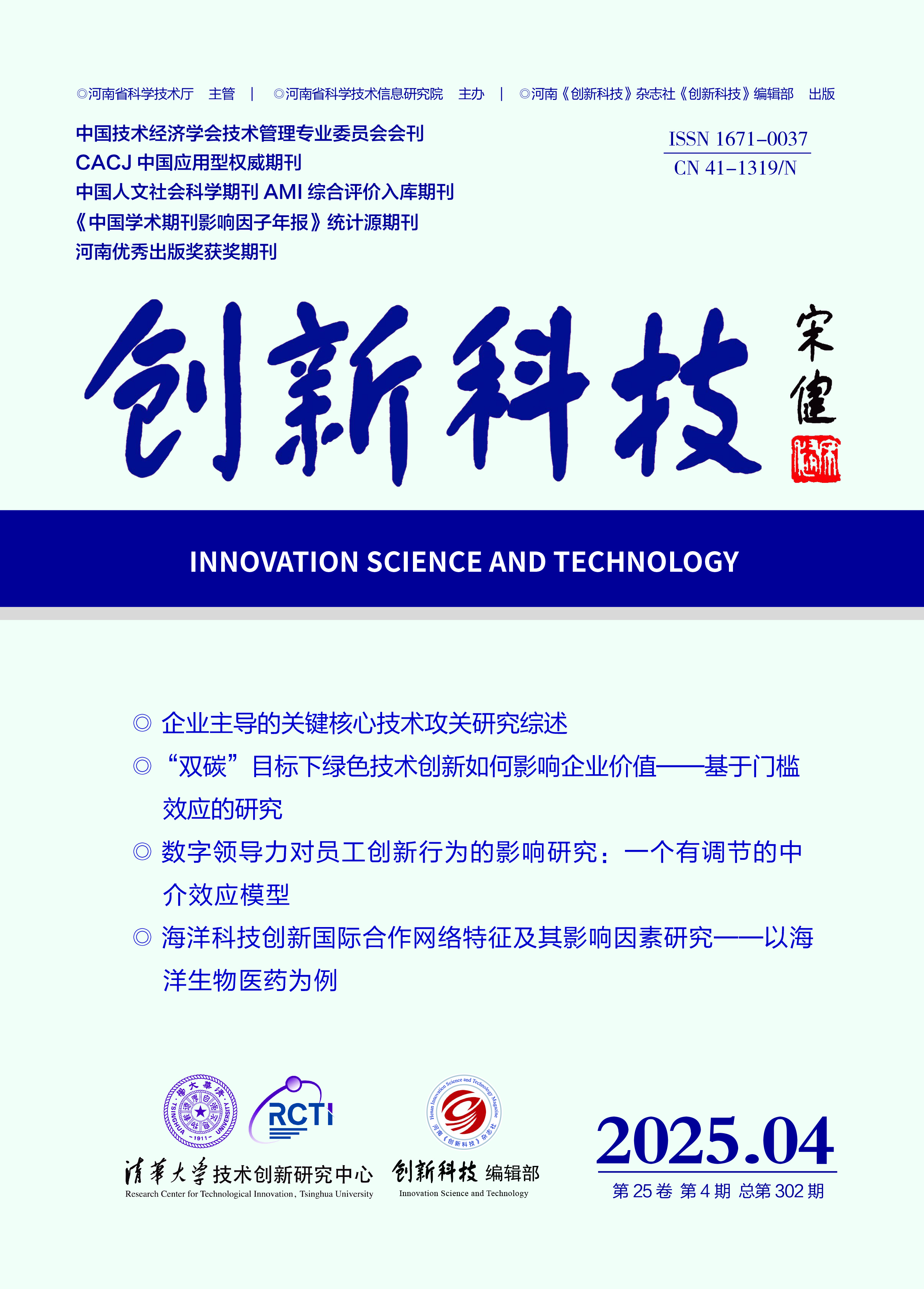INNOVATION SCIENCE AND TECHNOLOGY
Quick Search

All publication are peer-review
Peer review will take the from of double-blind review Judge objectively and impartially
There is no conflict of interest for the reviewer
Review articles shall be kept strictly confidential prior to publication
Science & Technology Strategy and Policy
A Policy Study on China's Manufacturing Digital Transformation Based on Policy Tools and LDA Models
Shang Tao, Liu Bojin
(School of Public Policy and Administration, Northwestern Polytechnical University, Xi'an 710072, China)
Abstract: To achieve the strategic goal of becoming a manufacturing powerhouse, China ur⁃ gently needs to establish a scientific and rational policy system for the digital transformation of its manufacturing sector. This study integrates policy tool theory to construct a two-dimensional analytical framework combining policy tools and objectives. Using text coding and frequency sta⁃ tistics, it conducts a multi-dimensional empirical analysis of policy tool types, issuing entities, development stages, effectiveness levels, and application ratios, systematically evaluating the ef⁃ fectiveness and characteristics of current digital transformation policies in manufacturing. Addi⁃ tionally, leveraging the LDA (Latent Dirichlet Allocation) topic models, the study employs ma⁃ chine learning to uncover latent themes in policy texts, revealing policy priorities through word frequency analysis and visualization, thereby providing a basis for optimizing policy design. Key findings include: ① Policy tools exhibit differentiated distribution, with environmental and supply-type tools constituting over 80% of the framework. Target planning and information sup⁃ port policies are prominent, but there is room to optimize the diversity and configuration of other measures. ②Demand-type tools are concentrated in specific areas, with financial support, fiscal mechanisms, and tax incentives forming the core dimensions. However, their overall application is limited, indicating a need to foster innovation and diversity in policy combinations. ③ The policy-making structure shows functional coordination, with the Ministry of Industry and Infor⁃ mation Technology, the National Development and Reform Commission, and the Ministry of Sci⁃ ence and Technology leading policy formulation. This coordination reflects a strong alignment between their functions and the needs of digital transformation, though participation from other departments remains insufficient. ④Policy themes emphasize strategic focus, with significant de⁃ ployment in industrial internet and digital transformation. In contrast, policies supporting smart manufacturing clusters and demonstration zones require strengthening. Based on these findings, the study proposes three optimization strategies: First, balance and dynamically adjust policy tool usage by increasing demand-side tools to optimize structural ratios, while exploring precise delivery modes for environmental and supply-type tools to enhance marginal benefits and effec⁃ tiveness. Second, establish cross-departmental collaboration mechanisms by introducing diverse policy-making entities and creating a decision-making framework led by core departments with coordinated support from related departments, ensuring comprehensive policy considerations. Third, balance the focus of digital transformation efforts by actively guiding and supporting the development of smart manufacturing clusters and demonstration zones. Strengthen policy tool synergies and foster a virtuous cycle of "policy guidance, factor aggregation, and energy-level ad⁃ vancement".
Key words: digital transformation; quantitative evaluation of policy; policy instrument typol⁃ ogy; LDA models; manufacturing industry